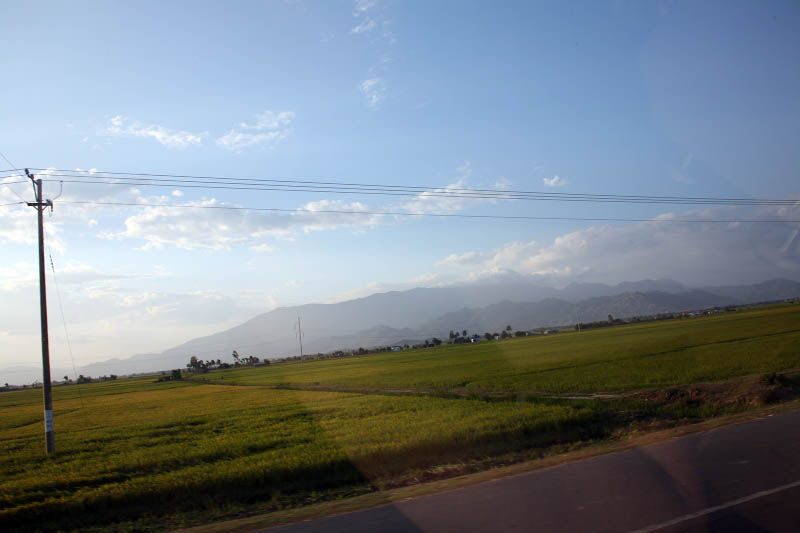If a “private homestay” is the key to an affordable visit to London, the same is true in Paris and Rome. Different from bed and breakfasts, homestays are the rental of a single room in a house or apartment whose owners are supplementing their income by taking in transient visitors. Such lodgings are available for as little as $35 to $40 per person per night, as compared with at least double that price (and sometimes more) for a room in a modest, commercial guesthouse or tiny hotel.
In my April 1 column, I listed several organizations that make such rooms available in London, such as www.happy-homes.com and www.athomeinlondon.co.uk. Immediately, I received letters requesting similar Web sites for low-cost private homestays in France and Italy.
— Paris room rentals: The notion of taking a foreign visitor into one’s apartment was once anathema to the average, privacy-seeking Parisian. To do so just wasn’t “French.” In a cultural shift that I won’t try to explain, slightly more than 200 Parisian families now have begun renting rooms in their homes or apartments — and these make up the inventory of three Parisian bed-and-breakfast services (more commonly known as chambres d’hôtes) offered to tourists from around the world.
Arctic Eagles Bid Mud Hens Farewell at Alaska Airlines
They called themselves the Arctic Eagles. For years, they flew Alaska Airlines passengers on the lonely routes from here to 20 remote outposts across the nation’s largest state. With limited instruments and little air-traffic control, they faced blizzards, bear heads, gravel runways and volcanic eruptions.
But after 25 years, the Eagles are being disbanded.
Alaska Air two weeks ago retired the last of its dedicated fleet of banged-up old Boeing 737-200s affectionately known as “mud hens.” As the airline expands its routes, it is sending the roughly 60 pilots onto newer aircraft that they’ll have to fly to California, Mexico and the East Coast as well as the Alaskan destinations.
Alaska is no longer their exclusive fief, either. Some of the airline’s other pilots will be able to fly the Arctic routes as long as they’re “checked out” on some of the most demanding airports.
I flew on one of these Alaska Air flights years ago, it took a few tries to land at the fogged in airport. Sat next to a woman who lost her husband – an air taxi pilot – in a crash.
Hanoi Scene – March 2007

Kurt Vonnegut Dead at 84
Pearls Before Breakfast
Each passerby had a quick choice to make, one familiar to commuters in any urban area where the occasional street performer is part of the cityscape: Do you stop and listen? Do you hurry past with a blend of guilt and irritation, aware of your cupidity but annoyed by the unbidden demand on your time and your wallet? Do you throw in a buck, just to be polite? Does your decision change if he’s really bad? What if he’s really good? Do you have time for beauty? Shouldn’t you? What’s the moral mathematics of the moment?
On that Friday in January, those private questions would be answered in an unusually public way. No one knew it, but the fiddler standing against a bare wall outside the Metro in an indoor arcade at the top of the escalators was one of the finest classical musicians in the world, playing some of the most elegant music ever written on one of the most valuable violins ever made. His performance was arranged by The Washington Post as an experiment in context, perception and priorities — as well as an unblinking assessment of public taste: In a banal setting at an inconvenient time, would beauty transcend?
The musician did not play popular tunes whose familiarity alone might have drawn interest. That was not the test. These were masterpieces that have endured for centuries on their brilliance alone, soaring music befitting the grandeur of cathedrals and concert halls.
Happy Easter!
Sunset – Bangkok

Doyle announces initiatives on energy independence and global warming
From the press statement posted on Governor Jim Doyle’s Web site:
Office of Energy Independence
Governor Doyle today signed an Executive Order creating the new Office of Energy Independence to advance the Governor’s vision on energy policy and promote the state’s bioindustry. The office will serve as a single-point of contact for citizens, businesses, local units of government and non-governmental organizations pursuing bio development, energy efficiency and energy independence. The office will also identify federal funding opportunities and serve as the State Energy Office, working to maintain federal designation and funding.
One initial project for the office will be to work with the Public Service Commission (PSC) on a potential multi-utility effort to build a “clean coal” electric generation facility.
Judy Ziewacz will serve as Executive Director of the office, which will be located in the Risser Justice Building.
Task Force on Global Warming
Governor Doyle signed an Executive Order creating a Task Force on Global Warming that will bring together a prominent and diverse group of key Wisconsin business, industry, government, energy and environment leaders to examine the effects of, and solutions to, global warming in Wisconsin. Using current national and local research, the task force will discuss and analyze possible solutions to global warming challenges that pose a threat to Wisconsin’s economic and environmental health. The task force will create a state plan of action to deliver to the Governor to reduce our state’s contribution to global warming.
In conjunction with the new task force, the Governor directed the Department of Natural Resources, with the assistance of the PSC, to lead an effort to obtain a current estimate of the greenhouse gas emissions in Wisconsin.
The task force will be chaired by Roy Thilly of the Wisconsin Public Power and Tia Nelson of the Board of Public Land Commissioners.
State ready for energy research lab
This column by Tom Stills, president of the Wisconsin Technology Council, ran in the Stevens Point Journal:
A joint proposal was filed Feb. 1 by the UW System, UW-Madison and Michigan State University to open a federal energy research lab in Madison. Molly Jahn, dean of the UW-Madison College of Agriculture and Life Sciences, has described the proposal as a strong fit with faculty, staff and student projects related to bio-energy. Those projects are taking place in disciplines that encompass biology, agriculture, engineering, natural resources and the social sciences. . . .
It will be months before the next phase of the federal selection process begins, but the collaborative effort should merit a hard look in Washington. If Wisconsin is successful, it could mean several hundred jobs and tens of millions of dollars within five years.
Corn is Not the Future of US Ethanol
New technology to make ethanol from crops such as grasses and trees instead of corn could ease price spikes of the grain within a decade, a U.S. Energy Department official said on Wednesday.
“I’m not going to predict what the price of corn is going to do, but I will tell you the future of biofuels is not based on corn,” U.S. Deputy Energy Secretary Clay Sell said in an interview.
Output of U.S. ethanol, which is mostly made from corn, is expected to jump in 2007 from 5.6 billion gallons per year to 8 billion gpy, as nearly 80 bio-refineries sprout up.
